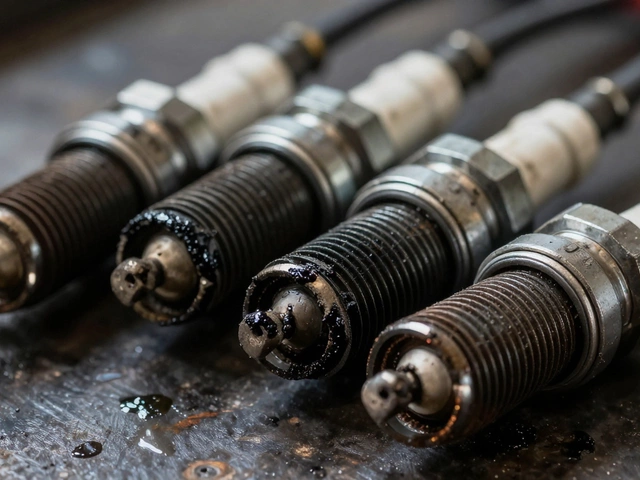If your car’s temperature gauge is creeping up and you catch that faint whiff of coolant, your wallet might start sweating as much as your engine. It’s easy to panic after hearing horror stories about massive radiator bills, but do radiators for modern cars really break the bank? The simple answer: sometimes, but it depends on where you live, what you drive, and how proactive you are. Let’s unpack why there’s such a wide range in radiator prices these days, what actually goes into the cost, and how you can avoid paying over the odds.
Why Car Radiators Matter More Than You Think
Let’s get this straight—your radiator isn’t just another chunk of metal under the bonnet. It’s the unsung hero that keeps your car’s engine from turning into molten slag. When your engine runs, it generates a mountain of heat. Without the radiator’s constant flow of coolant, you’d be stranded at the side of the road with a steaming engine or, worse, looking at a sky-high repair bill for a blown head gasket.
The modern radiator isn’t like the clunky copper-and-brass contraptions from grandad’s old Rover. These days, most radiators are made from aluminium and high-strength plastic. They’re lighter and transfer heat more efficiently, which makes them kinder to your fuel bills and the environment. But here’s the kicker: that plastic, while cheaper to make, isn’t as durable as the all-metal jobs of the past. So if you’ve got a car less than a decade old, don’t be surprised if you’re staring at a split seam or cracked tank after about 100,000 miles.
And don’t think it’s just a summer problem. Winter makes radiators work even harder, especially in places like Bristol where one day you’re shivering and the next you’re sweating. Sudden freezes followed by a rapid thaw can split pipes and cause leaks. Wasn’t uncommon here to see old Mondeos steaming gently at the side of the A38 on a crisp January morning. If you’ve been topping up coolant more often or seeing orange stains under your car, your radiator’s trying to tell you something.
But why does all this matter? Because if you let a failing radiator slide, you can end up paying not just for a new one, but also for warped cylinder heads or a trashed engine block. The best way to dodge a four-figure repair bill is to keep your radiator in top nick—or, when it’s truly had it, replace it promptly with the right part.
What’s Driving Up Radiator Prices in 2025?
You might think car radiators are all made equal, but there’s a world of difference between a £100 heater for a Ford Fiesta and a £1,500 job for a hybrid Range Rover. The UK used to see basic radiators retailing at £80–£150 for most compact cars, but 2025 has cranked those numbers up—sometimes almost doubling them.
Why? Several reasons. First off, material costs have soared. Aluminium prices have bounced around thanks to shifting global supply chains, and all those high-strength plastics aren’t as cheap as recyclers had hoped. Next, the tech has marched on. Many modern cars, especially hybrids and EVs, use complex radiator setups with extra sensors and electronic fans. Some even have integrated coolers for the battery packs, making them way more pricey to make and, unfortunately, to fix.
It’s not just the bits themselves. Labour is up, too—trained mechanics aren’t getting any cheaper and cars are more fiddly to work on than ever. A half-hour swap in your mate’s garage has morphed into a three-hour slog at the dealership, just to get around all the trim and wiring. And spare parts for newer models often get held up in shipping; anybody waiting months for a Kia or Tesla part lately knows what I’m on about.
Here’s a quick peek at typical radiator costs for different car types in 2025 in the UK:
| Car Type | Radiator Price (Part Only) | Labour Cost (Approx) | Typical Total |
|---|---|---|---|
| City Car (Fiesta, Polo) | £120–£200 | £70–£130 | £190–£330 |
| Family Saloon (Focus, Octavia) | £180–£300 | £120–£200 | £300–£500 |
| SUV/Vans | £250–£400 | £150–£300 | £400–£700 |
| Luxury/Hybrid/Electric | £350–£1,200 | £250–£500 | £600–£1,700 |
Those numbers can sting, especially if the car’s not worth much itself. But knowing what drives up the cost can help you challenge repair quotes that seem off the charts.

How to Spot a Failing Radiator Before It Wipes Out Your Wallet
Keeping an eye out for radiator troubles isn’t just for the car-mad. Everyone can spot the signs—if you know what to look for. The most obvious clue is coolant leaking from underneath your radiator, usually right below the front bumper. If it’s green, orange, or pink and smells kind of sweet, that’s almost always antifreeze.
Another dead giveaway is if your engine temperature needle keeps creeping up into the red. Modern cars will usually throw up a warning light, but older models might just steam quietly until something gives. If the heater inside your car stops working or blows cold air even when it’s set to max, your coolant may not be circulating right—which often points back to radiator woes.
Maybe you notice your coolant level keeps dropping, even though you’re not seeing a puddle under the car. That could mean a hairline crack in the radiator that only drips while you’re moving or steam that escapes as vapour. Pop the bonnet and look for white, crusty stains around the radiator end tanks or seams. These are classic markers of slow leaks, especially on plastic-tanked models built in the last decade.
Sometimes there’s a weird gurgling or bubbling sound after turning off the engine. That’s air in the cooling system, often caused by a leak somewhere—quite possibly a radiator on the way out. Paying attention to these signals lets you catch radiator issues sooner, before they snowball into bigger, nastier (and pricier) disasters like blown engines.
Why the Brand and Model Make Such a Difference
Picture this: you drive a bog-standard five-year-old Ford Focus, and your mate drives a European import hybrid with all the bells and whistles. Your radiator goes—bad luck. His goes—bad luck and worse news for his wallet. Why?
The market is absolutely flooded with pattern parts (aftermarket radiators), especially for common models from Ford, Vauxhall, VW, and other bestsellers. These parts are usually much cheaper than brand-new OEM (original equipment manufacturer) ones and often do the job just as well for daily runabouts. Just be wary of no-name imports off eBay or dodgy breakers; shoddy construction or thin aluminium can mean another failure in months. It’s always smart to pay a few quid more for a brand with a solid warranty, like Nissens or Valeo.
Now, if you drive something more upmarket—say, a Jaguar, a hybrid Honda, or a new EV—you’re kind of at the mercy of the manufacturer. A lot of the time, you have to buy the radiator from the dealership because it’ll have custom-moulded tanks or built-in sensors the aftermarket doesn’t cover. These radiators can be eye-wateringly expensive: north of £1,000 isn’t rare. Electric cars also use complex cooling networks that may link the battery and inverter; bugger up the radiator job on one of those, and you risk much bigger bills down the line.
So, in a nutshell: older and more common equals cheaper and easier to fix, brand new or specialised often means more cash and more hassle. And make sure you’re not just getting the cheapest part—you want something that’ll last at least as long as the original did.

Tips for Cutting Radiator Costs—And When DIY Makes Sense
Here’s where you can actually save yourself a fair wad, if you play it smart. First off, ring around several local garages and get written quotes. Main dealers almost always charge the most, but there’s no harm using their quote to haggle with your local independent. Ask specifically about warranty periods on both the part and labour—they can vary from a stingy twelve months to a reassuring three years.
Sometimes, sourcing the part yourself and bringing it to the garage can shave off £50–£100, just make sure it’s the right spec for your engine and comes from a reputable supplier. Just don’t try to cheap out with used radiators unless you absolutely have to; a used radiator can be a ticking time bomb.
If you’re keen and have a reasonable toolkit, swapping out a radiator at home is doable on older or simpler cars. There are tons of YouTube guides—just search for your specific make and model and watch one all the way through before you start. Here’s a rough guide for the brave:
- Wait until the engine is stone cold. Hot coolant is unforgiving. (You might want gloves and safety goggles, just in case.)
- Drain the coolant into a suitable container for recycling (don’t pour it down the drain—it’s toxic to pets).
- Unclip or unscrew the fan, hoses, and any electrical connectors.
- Remove mounting bolts and carefully lift out the old radiator—try not to scratch the paintwork!
- Install the new radiator, reconnect everything, refill with fresh coolant, and bleed the system to get rid of air pockets.
This can save you £100–£300 if you’re up for the challenge. But on newer cars or anything with hybrid components, it’s safer to bite the bullet and use a pro—as one misplaced pipe can be an expensive mistake.
If the quote is scary but your car is otherwise pristine, it might still be worth the spend. But if it’s an old banger ready for MOT retirement, you could use the radiator bill as the final straw and move on instead.
The golden rule: shop smart, act early, and don’t believe every sky-high quote you see. A little research and common sense can keep your car—from Fiesta to Ferrari—running cool, without boiling your bank account.






